Today I demonstrated some of the new features of VMware vSAN 7.0 Update 3 (7.0 U3) related to 2-node deployments to one of our customers who uses this topology extensively. We have focused particularly on improvements to the resilience of 2-node clusters and the witness Host. You can find a short video about the features here. An extensive list of the new features and the release notes can be found here and here.
Another new feature I noticed but forgot zu demonstrate to the customer ist the new vSAN cluster shutdown and restart operation. I already tested the shutdown and restart feature with my 4-node cluster but as the demo was finished I decided to give the feature a try with the 2-node cluster and the external witness appliance.
Shutting down a vSAN Cluster in 7.0 U3 is as simple as installing some good old Windows application. Just Next, Next, Next and Finish (in this case Shutdown). I have outlined the steps below.
Shutdown
Navigate to your vSAN Cluster in the inventory –> Configure –> vSAN –> Services and click the SHUTDOWN CLUSTER operation in the top right corner.
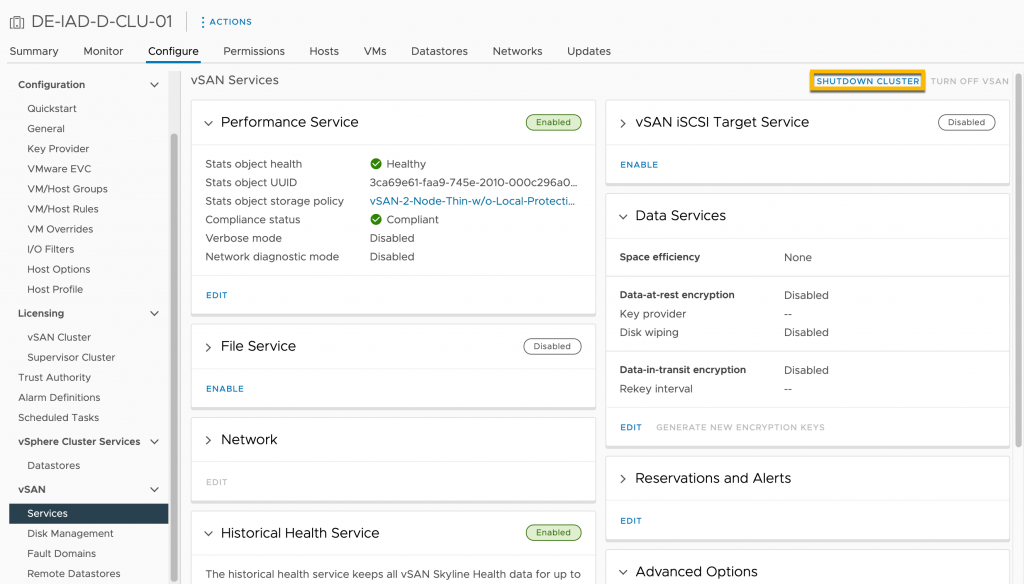
Without requiring any further action, the pre-shutdown check is performed. The pre-shutdown check verifies the cluster state for conditions that prevent a safe and successful shutdown. In my case, I had some running guest VMs that needed to be shut down manually before the automatic shutdown.
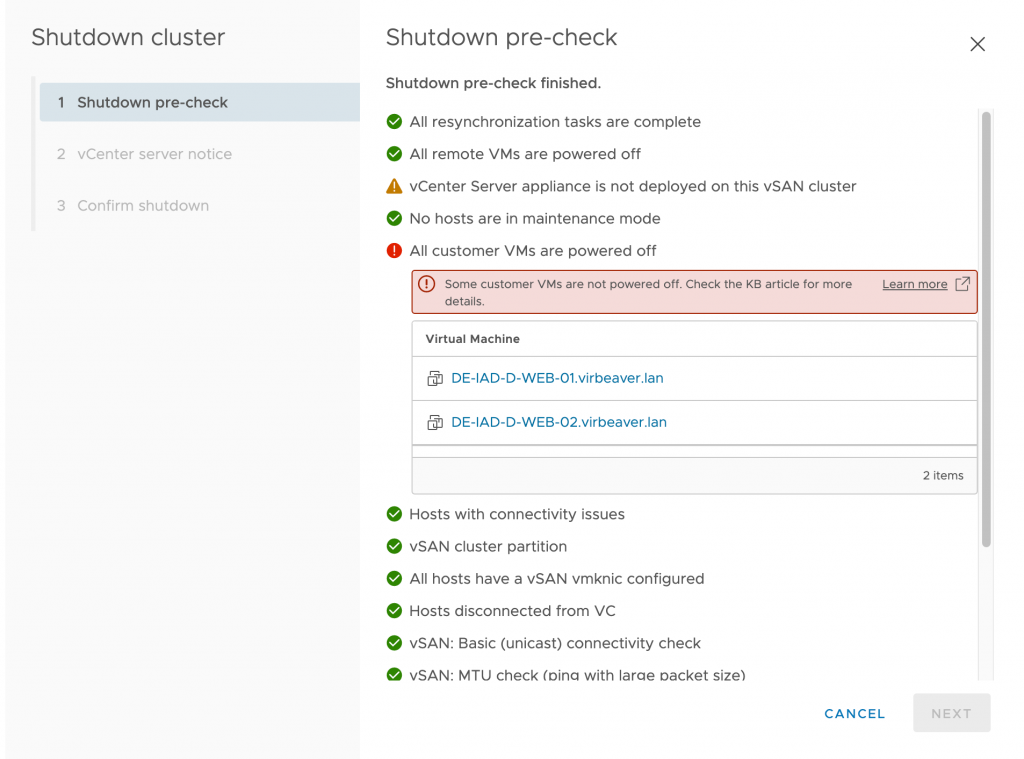
After shutting down these guest VMs I returned to the cluster shutdown wizard and was able to pass the pre-check and continue to the next step.
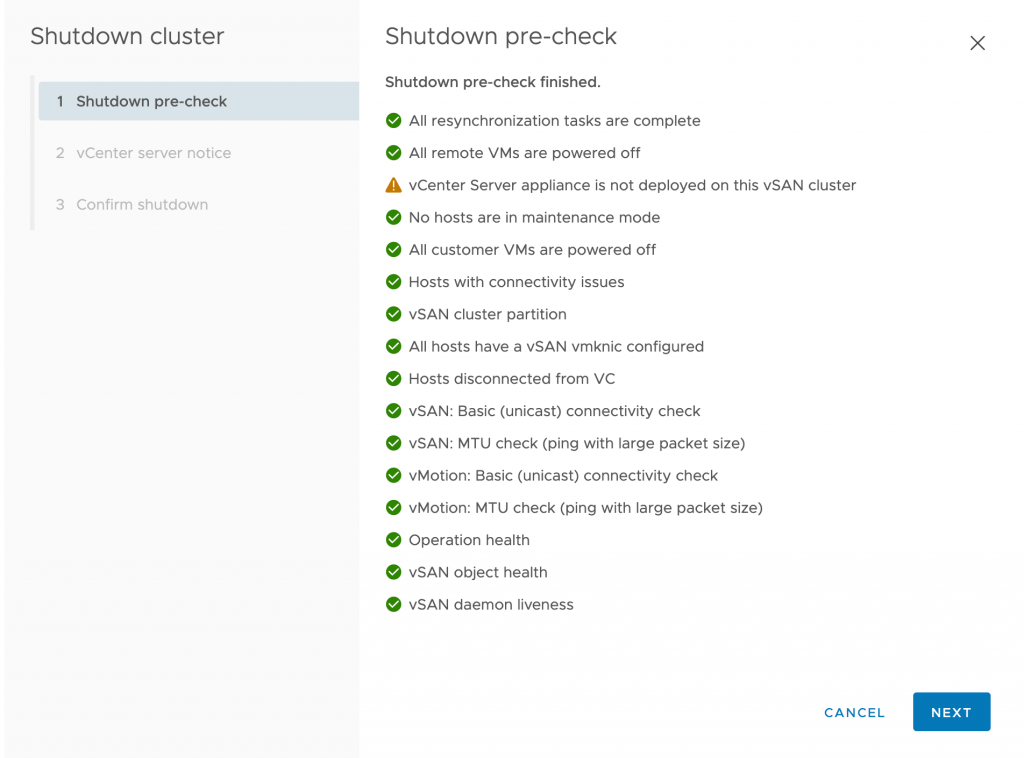
As you may have noticed both the pre-checks reported a warning regarding the deployment of my vCenter Server Appliance (VCSA). For the demo I deployed the VCSA on top of the vSAN cluster the VCSA manages to create a self-managed environment. This causes some trouble because to shutdown the ESXi hosts all guest VMs have to be shut down. This includes the VCSA. Without vCSA there is no centralized management of the cluster which means no visibility into the shutdown process from the outside.
Fortunately, regardless of the deployment of the VCSA, the cluster shutdown wizard still takes care of shutting down the cluster.To accomplish this task the ESXi host on which the VCSA is running on is selected as orchestration host. He takes care of all other tasks for the shutdown and later also for starting the VCSA when the cluster is restarted.
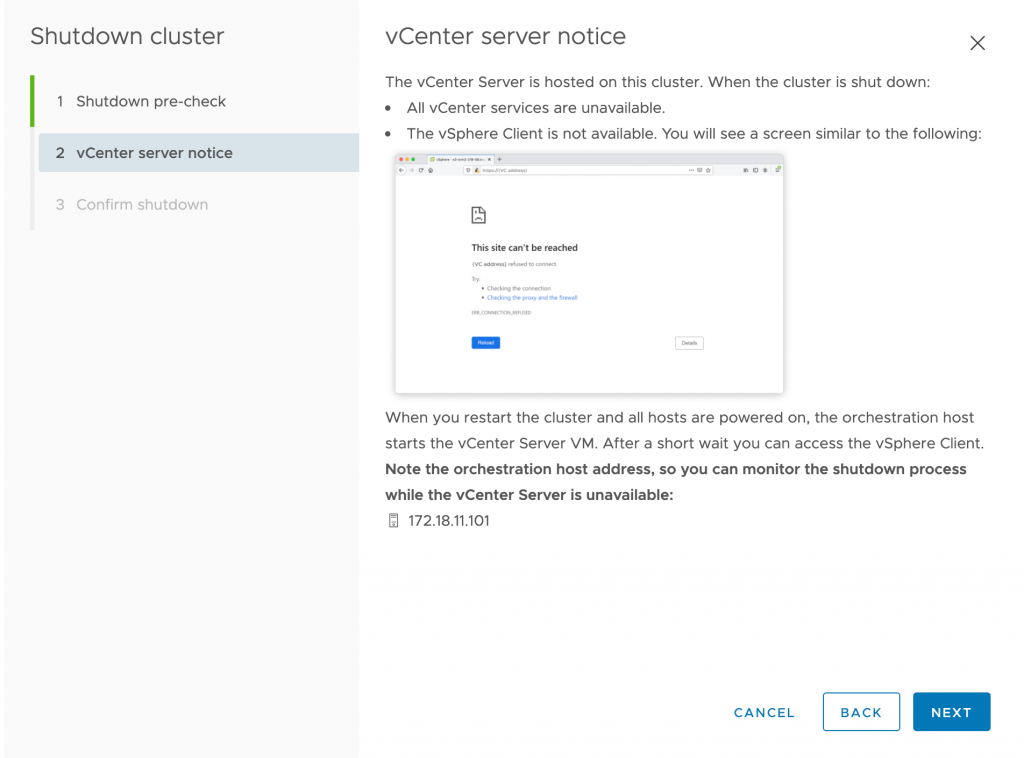
Last but not least you are presented with the summary and have to confirm the shutdown operation.
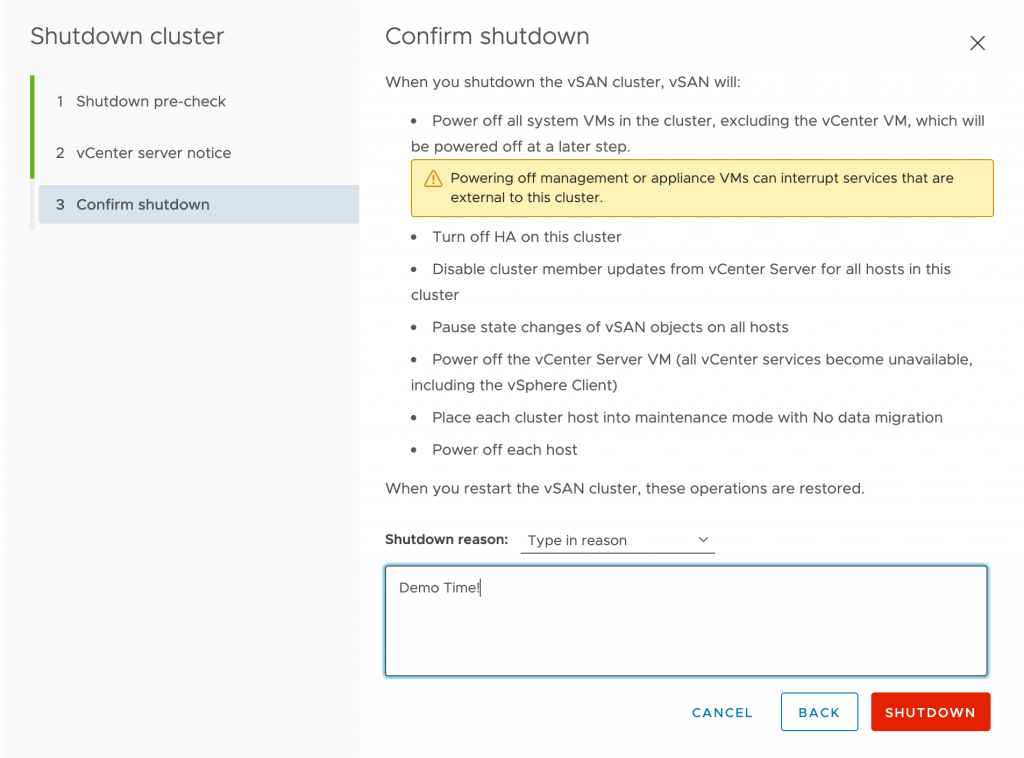
After hitting the red SHUTDOWN button in the bottom right corner you can sit back, relax and watch your cluster shutting down. Due to my VCSA running on top of the shutting down vSAN cluster watching the progress bar is a short pleasure.
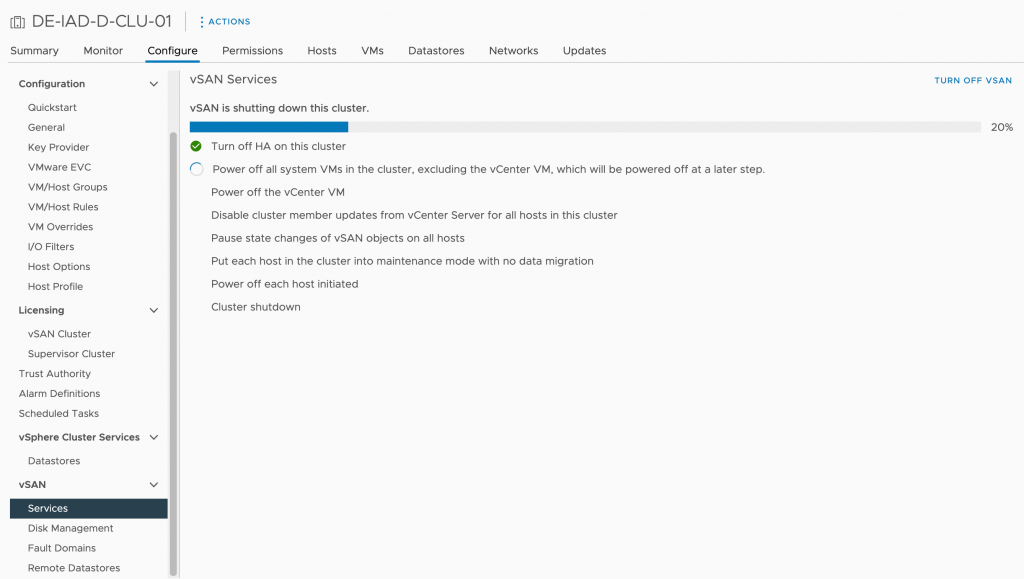
After a few minutes your cluster is shut down. You can check the OOB-management of your physical servers (or, if running in a nested lab like me, the underlying ESXi host) to ensure your ESXi hosts are powered off completely.
Important: All ESXi hosts of the vSAN cluster are shut down cleanly, but the witness host/appliance continues to run. At first I was briefly disappointed that I now have to shut down a VM in my nested lab after all. After a moment’s thought, however, I figured out that this was an intentional, if not necessary, exception.
Considering the ability introduced in vSAN 7 Update 1 to use one vSAN witness host/appliance for multiple 2-node clusters, it would be quite inconvenient to shut down the witness host/appliance as part of a single 2-node cluster. More about shared witness with 2-node clusters can be found here.
Restart
Shutdown and restart are like backup and restore: The first is good, but without the second, the first is useless. Fortunately, with vSAN version 7.0 U3, rebooting is almost easier than shutting down. You simply start the ESXi hosts of your vSAN cluster and wait until they are fully started, or as in my case, until the VCSA on the vSAN cluster is fully started. You can track the power-on process of the vSAN cluster and VCSA on your orchestration host.

After your hosts and the VCSA started successfully, you can login back to the vCenter GUI. You will be redirected to the vSAN services page again.From here on you can initiate the remaining operations of the restart. To do so simply click on RESTART and after a quick pre-check click on RESTART again.
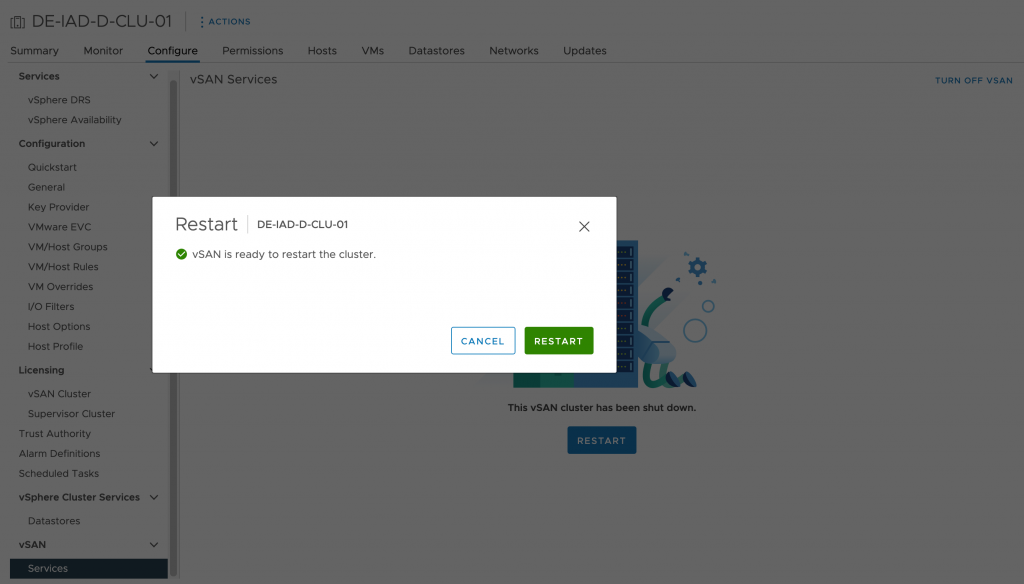
Again time to sit back, relax and watch VMware vSAN doing the work for you.
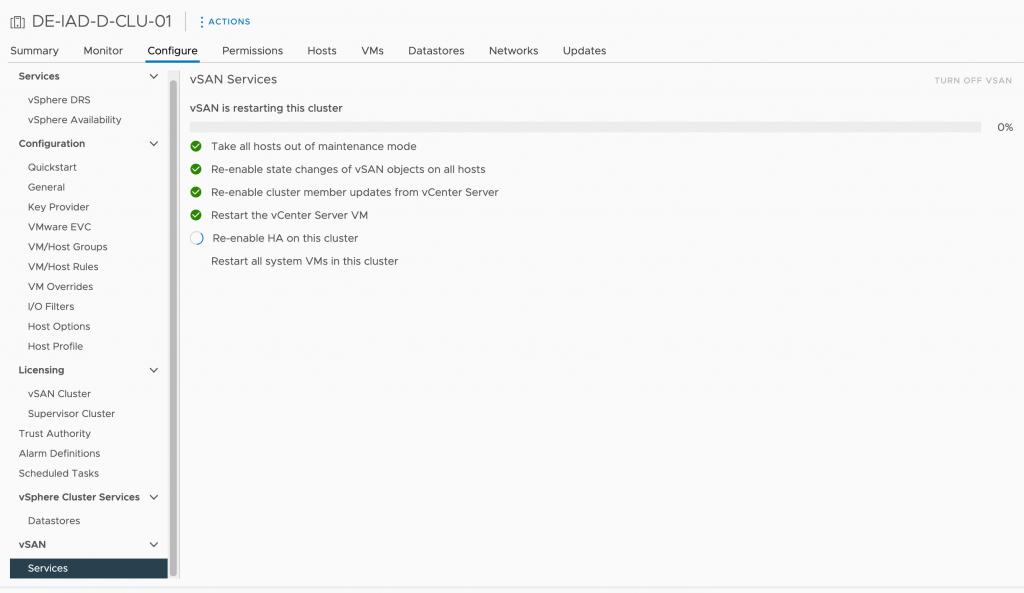
After a few minutes your cluster restart is completed and you can continue with booting up your guest VMs.
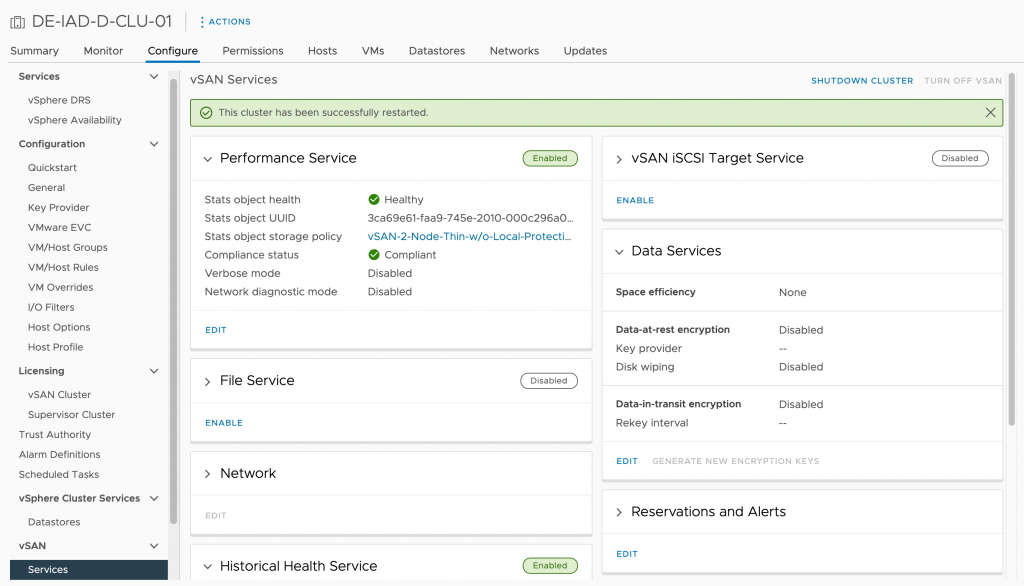
Wrap-Up
Despite all the other great features of VMware vSAN 7.0 Update 3 I really love the simplicity and reliability of the ne vSAN cluster shutdown and restart feature. Even some not so common scenarios as a self-managed VCSA on the vSAN cluster itself are covered.
Also, the fact that the vSAN witness host/appliance is not automatically shut down shows once again that a lot of thought went into this before the feature was made available to the general public.
